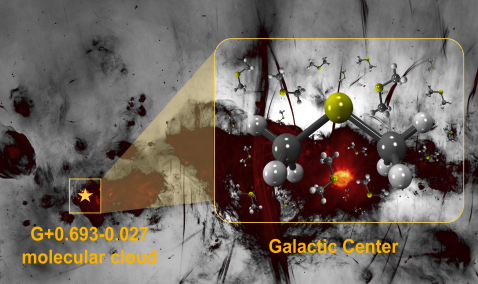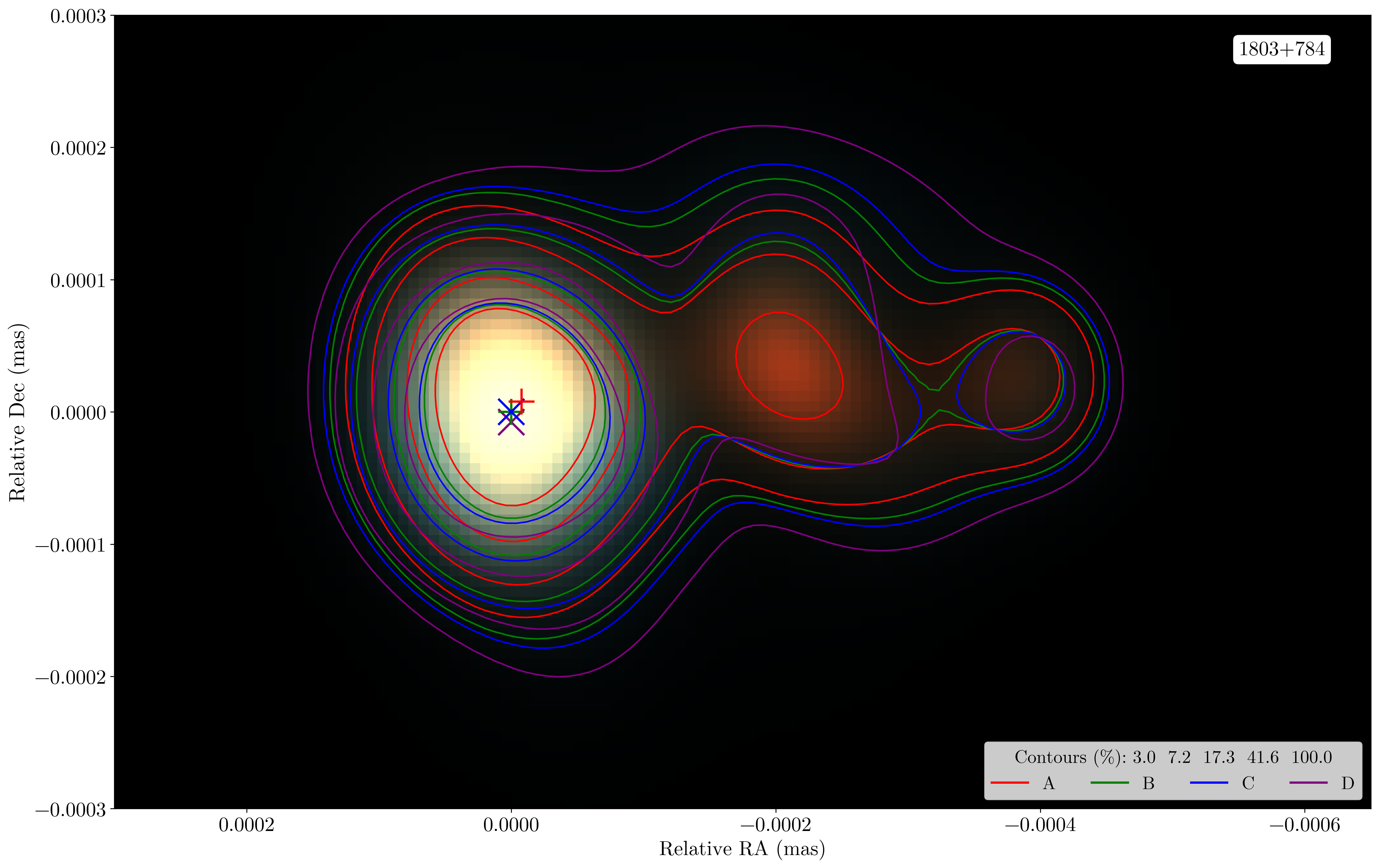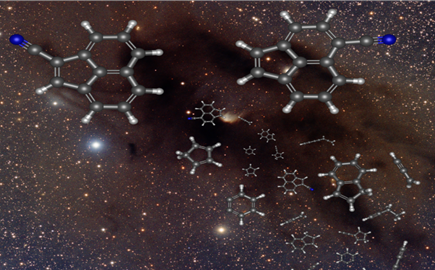| YEBES OBSERVATORY |
| A Spanish Scientific and Technical Infrastructure |
Outreach
Discovery of dimethyl sulfide in the interstellar medium
 An international team led by the Center for Astrobiology (CAB), CSIC-INTA, has discovered the
presence of dimethyl sulfide (DMS) in the interstellar medium. The team of researchers used astronomical data obtained with the 30-meter IRAM
radio telescope and the 40-meter radio telescope of the Yebes Observatory. This finding
demonstrates that DMS can be formed abiotically in space, which limits its reliability as a biomarker in the search for extraterrestrial life on exoplanets. It also represents
a breakthrough in the understanding of the chemical complexity in the interstellar medium, as it is the most complex sulfur molecule detected to date.
An international team led by the Center for Astrobiology (CAB), CSIC-INTA, has discovered the
presence of dimethyl sulfide (DMS) in the interstellar medium. The team of researchers used astronomical data obtained with the 30-meter IRAM
radio telescope and the 40-meter radio telescope of the Yebes Observatory. This finding
demonstrates that DMS can be formed abiotically in space, which limits its reliability as a biomarker in the search for extraterrestrial life on exoplanets. It also represents
a breakthrough in the understanding of the chemical complexity in the interstellar medium, as it is the most complex sulfur molecule detected to date.
Bibliography:
- Scientific article: On the Abiotic Origin of Dimethyl Sulfide: Discovery of Dimethyl Sulfide in the Interstellar Medium
References (in Spanish):
- CAB press note from April 2025: Descubrimiento de sulfuro de dimetilo (DMS) en el medio interestelar: ¿es un buen indicador de vida?
Extragalactic research based on new-generation geodetic data
 An international team lead by scientists and astronomers from the Observatorio Astronómico Nacional (OAN) have developed a new technique to make use of geodetic data in order to exploit their use for extragalactic research. The data used are part of the next-generation geodetic VLBI system, the VLBI Global Observing System (VGOS), accounting with the observations from 8 antennas from the net. In particular, the Yebes 13m antenna was used in the observations. The figure shows the capabilities of the technique creating the image of the most observed source, 1803+784, a powerful blazar.
An international team lead by scientists and astronomers from the Observatorio Astronómico Nacional (OAN) have developed a new technique to make use of geodetic data in order to exploit their use for extragalactic research. The data used are part of the next-generation geodetic VLBI system, the VLBI Global Observing System (VGOS), accounting with the observations from 8 antennas from the net. In particular, the Yebes 13m antenna was used in the observations. The figure shows the capabilities of the technique creating the image of the most observed source, 1803+784, a powerful blazar.
Bibliography:
- Scientific article: Towards an astronomical use of new-generation geodetic observations
References:
- EVN/JIVE Newsletter from January 2025: Extragalactic research based on new-generation geodetic data
Discovery of cyanoacenaphthylene
 An international team lead by scientists and astronomers from the Observatorio Astronómico Nacional (OAN) and Centro Superior de Investigaciones Científicas (CSIC) have detected the largest molecules found so far in space. In particular these are molecules made of 21 atoms each, located in the interstellar cold molecular cloud TMC-1. The observations have been achieved by the 40m antenna from the Yebes observatory. These results have been published in the astrophysical journal Astronomy & Astrophysics and provide new routes to understand the chemical complexity of the Universe.
An international team lead by scientists and astronomers from the Observatorio Astronómico Nacional (OAN) and Centro Superior de Investigaciones Científicas (CSIC) have detected the largest molecules found so far in space. In particular these are molecules made of 21 atoms each, located in the interstellar cold molecular cloud TMC-1. The observations have been achieved by the 40m antenna from the Yebes observatory. These results have been published in the astrophysical journal Astronomy & Astrophysics and provide new routes to understand the chemical complexity of the Universe.
Bibliography:
- Scientific article: Discovery of two cyano derivatives of acenaphthylene (C12H8) in TMC-1 with the QUIJOTE line survey
References (in Spanish):
- MITMS Press note: Astrónomos del ministerio lideran la detección de moléculas en el medio interestelar
- CSIC Press note: Científicos del CSIC lideran la detección de las moléculas más grandes halladas en el espacio
- Radio interview: Las moléculas interestelares desvelan nuestro origen
- Radio news: Moléculas y vida
Other articles from previous years can be found on older news section.